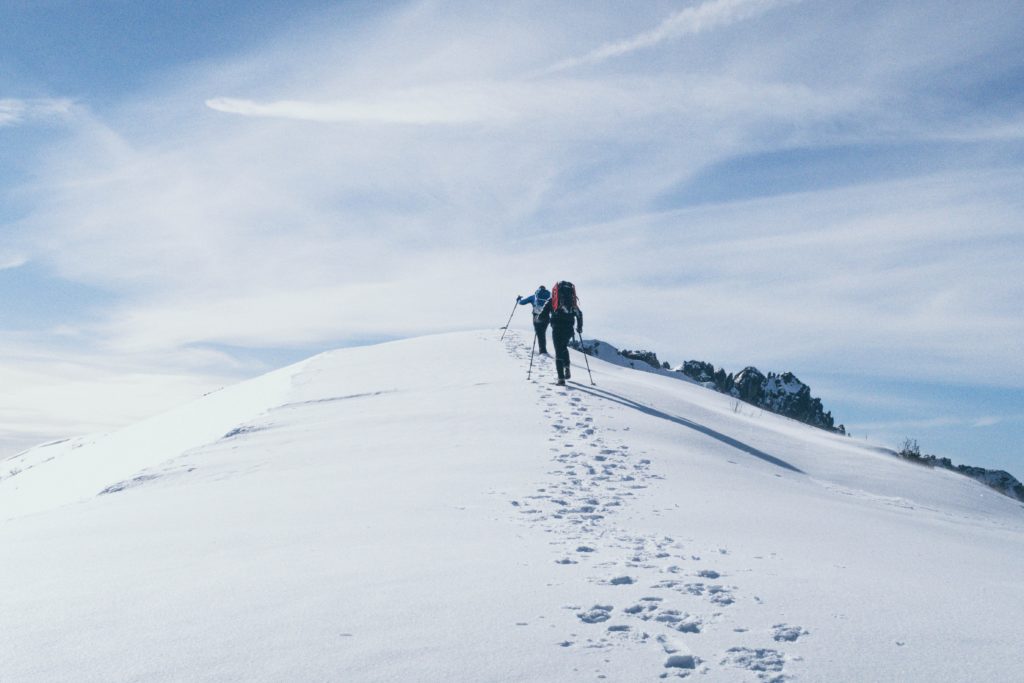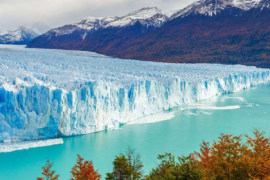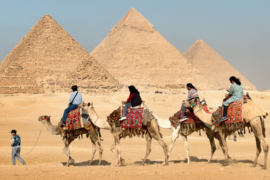If you’re planning on trekking a mountain, weather is going to be a factor. One key ingredient to having a successful summit is to mitigate any issues with the weather.
Dressing in layers is essential to regulating your body temperature. Since trekking is an active sport, you’ll also need materials that will wick sweat away from your skin.
The best way to dress for the mountains is to focus on one layer of clothing at a time, keeping in mind that the weather can be more severe the higher you climb.
Mountaineering experts agree on the tried-and-true strategy of dressing in layers.
A layered clothing system keeps you warm and dry, and can vary depending on the weather conditions. By peeling off layers as the level of activity increases you are able to regulate your body temperature.
The Layered Clothing System
Dressing in layers:
1. Base layer
(underwear layer): wicks sweat off your skin
The base layer is the layer closest to your skin. It collects the most sweat. This layer keeps you dry by wicking moisture away from your skin and spreading it throughout the fabric. For your base layer, use synthetic or wool garments. Do not use cotton, as it will retain too much moisture.
2. Middle layer
(insulating layer): retains body heat to protect you from the cold
The middle layer uses trapped air to retain your body warmth. Typically, a middle layer is fleece or wool. It varies in weight and degree of thickness depending on the climate.
3. Outer layer
(shell layer): shields you from wind and rain
The outer layer should be both breathable and water-resistant. The shell’s primary function is to protect you from the elements when conditions take a turn for the worse.
GEAR LIST:
Dressing in Layers for Mountains 13,000 – 16,000 ft.
1st Layer. (Base Layer)
- Upper: Dry fit shirt (not cotton)
- Bottom: Underwear, synthetic pants.
- Feet: Dry fit socks (not cotton)
- Hands: Internal gloves (thin gloves, are easy to use all the time)
- Head: Warm hat, or wool hat.
- Face: Buff or multifunctional headwear(worn as a mask, bandana, hairband, balaclava or scarf)
2nd Layer. (Middle Layer)
- Upper: Polar tec fleece or wool jacket.
- Bottom: Hiking pants (not cotton) or jeans.
3rd Layer. (Outer Layer)
- Upper: Rain jacket, waterproof and breathable (Gore tex or similar recommended)
- Bottom: None.
Footwear.
- Trail running tennis or hiking boots.
Camping.
- Sleeping pad or thick yoga mat.
- Sleeping bag (35 f to 14 f comfort temperature range)
- Headlamp
- A clean change of clothes and warm night clothes to use as a pajama
Personal gear.
- Sunblock.
- Sunglasses (UV protection and cover the eye completely).
- A 1-liter water container.
- Trekking poles.
- Any medicine you usually take.
Dressing in Layers for Mountains Above 16,000 ft.
1st Layer (Base layer)
- Upper: Dry fit shirt (not cotton)
- Bottom: Underwear, synthetic pants.
- Feet: Dry fit socks, liner (not cotton)
- Hands: Internal gloves (thin gloves, are easy to use all the time)
- Head: Warm hat, or wool hat.
- Face: Buff or multifunctional headwear(worn as a mask, bandana, hairband, balaclava or scarf)
2nd Layer (Middle layer)
- Upper: Polar tec fleece or wool jacket.
- Upper 2: Fill down feather jacket.
- Feet: extra Wool socks.
- Hands: Waterproof external gloves.
Third layer (Outer layer)
- Upper: Rain jacket, waterproof and breathable with hat (Gore tex or similar recommended)
- Bottom: Waterproof breathable pants.
Footwear.
- Waterproof breathable hiking boots or alpine boots.
Technical equipment.
- Sleeping pad or thick yoga mat.
- Sleeping bag (25 f to -4 f comfort temperature range)
- Headlamp.
- 35-55 liter capacity backpack with wrist and chest straps.
- Harness (included)
- Ice axe (included)
- Crampons (included)
- Carabiner (included)
- Helmet (included)
- Warm night clothes to use as a pajama.
Personal gear.
- Sunblock.
- Sunglasses (UV protection and cover the eye completely).
- Two 1-liter water containers.
- Trekking poles.
- A clean change of clothes and comfortable shoes in a separate bag.
- Any medicine you usually take.
Conclusion:
Dressing in layers with the right gear can improve your experience on the mountain. Now that you know what to wear you are ready to climb your first mountain in Mexico. With a layered clothing system all the layers work together to achieve the following benefits: wicking moisture, trapping in heat, insulating from the cold, and blocking out wind and weather. Even if you don’t wear all the layers throughout the entire trek, you should take them on every outing. It’s better to be safe than sorry.
Let me know in the comments below if this information was useful for you, and if you want more tips like this for your next adventure.
Make your dream trip possible, receive a personalized quote and payment facilities to suit your needs
No compromises!





